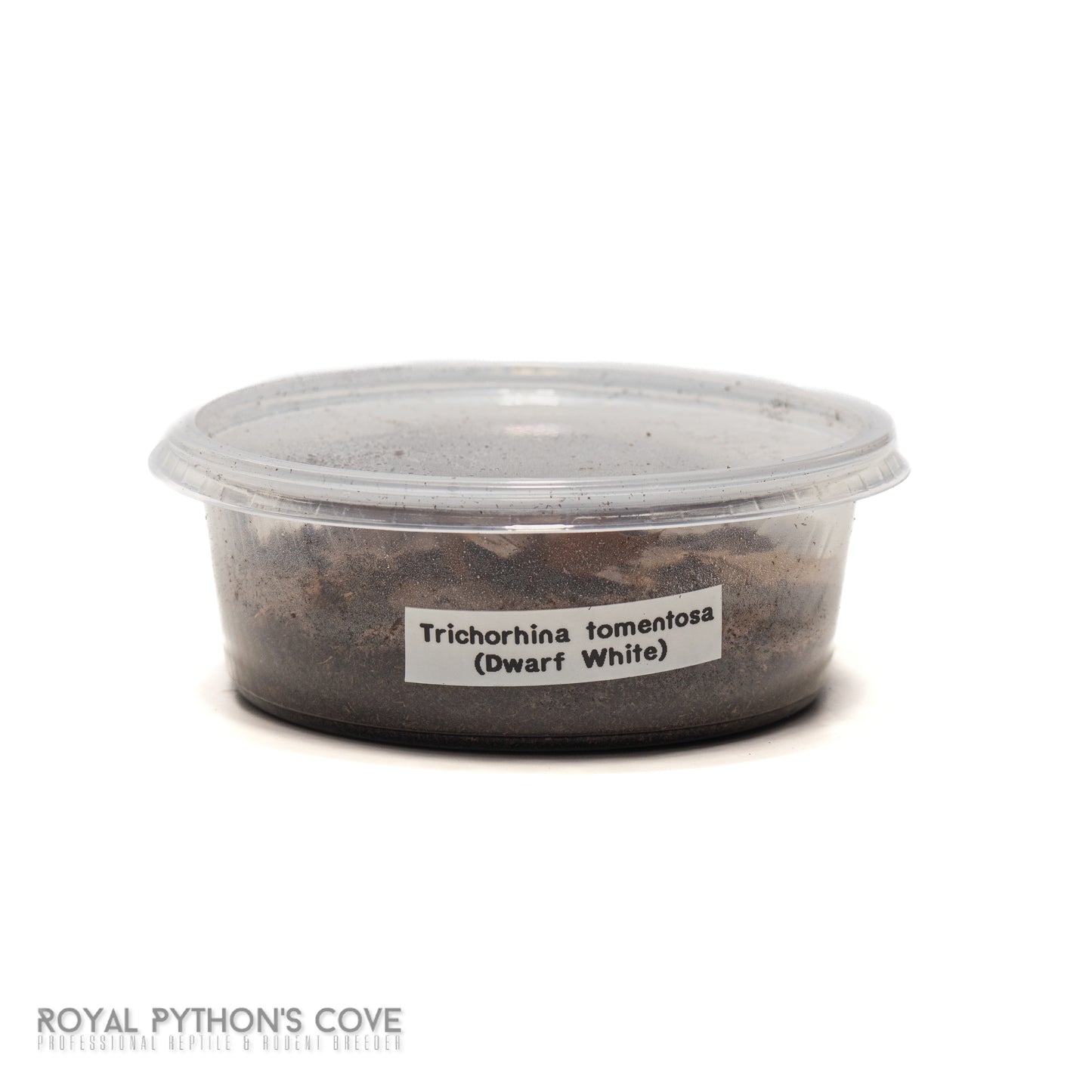Royal Python's Cove
Trichorhina tomentosa "Dwarf White" Isopods
Trichorhina tomentosa "Dwarf White" Isopods
Couldn't load pickup availability
Trichorhina tomentosa: Functional Ecosystem Contributors
Dwarf White Isopods are small, terrestrial crustaceans that play essential roles in vivarium ecosystems, offering numerous benefits and serving as effective cleanup crews. Here’s a detailed description of their functions, preferred habitat, thriving conditions, and compatible insects for cohabitation.
Functions in Vivarium Ecosystems
Dwarf White Isopods contribute significantly to vivarium health, and this is how:
- Decomposition: They break down decaying organic matter, helping to maintain clean and balanced substrate conditions.
- Nutrient Cycling: Isopods recycle nutrients back into the soil through their waste, enriching the substrate for plant health.
- Aeration: Their burrowing activity aerates the substrate, promoting healthy root growth and preventing compaction.
- Bioactive Cleanup Crew: They consume leftover food, mold, and debris, reducing the risk of mold outbreaks and pests.
Preferred Habitat
- Substrate: They thrive in a moist substrate rich in organic matter, such as coconut fiber, peat moss, or leaf litter.
- Moisture Levels: Maintain moderate to high humidity levels (70-80%) to prevent desiccation.
- Temperature: Ideal temperature range is typically 70-75°F (21-24°C), though they can tolerate slightly cooler or warmer conditions.
- Ventilation: Provide adequate ventilation to prevent stagnant air and maintain oxygen levels.
Thriving Conditions
Ensure optimal conditions for dwarf white isopods by:
- Hydration: Mist the enclosure regularly to maintain humidity levels. Provide a moist area where they can retreat if needed.
- Feeding: Offer small amounts of fresh vegetables, fruits, and calcium sources like cuttlebone or calcium powder.
- Substrate Depth: Provide a substrate depth of at least 1-2 inches to accommodate burrowing behavior.
- Compatibility: Avoid overcrowding and ensure sufficient hiding places and surface area for isopods to thrive.
Recommended Cohabitation
To enhance vivarium biodiversity and functionality, consider cohabitating dwarf white isopods with:
- Springtails (Collembola): These tiny arthropods help in breaking down organic matter and can coexist peacefully with dwarf white isopods. Check out our colonies of White & Orange Springtails!
- Powder Orange / Blue Isopods (Porcellionides pruinosus): Larger than dwarf white isopods, they also assist in nutrient cycling and can occupy different niches in the vivarium.
- Earthworms: Beneath the substrate, earthworms aid in aerating and enriching the soil, complementing the activities of isopods and springtails.
By maintaining a balanced ecosystem with these inhabitants, you can create a thriving vivarium that supports plant growth, maintains clean conditions, and provides enrichment for its inhabitants.
Share



